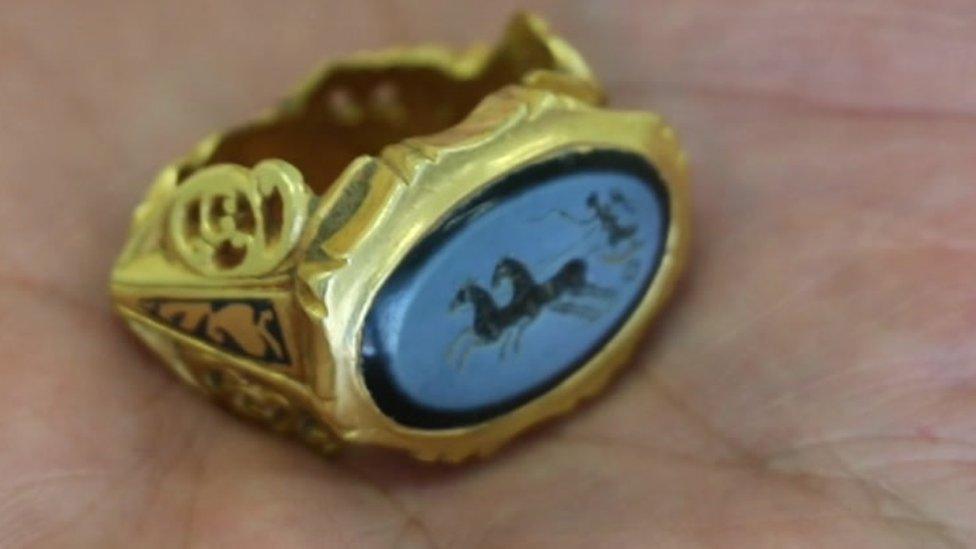Roman cemetery found at Somerton new school site
- Published
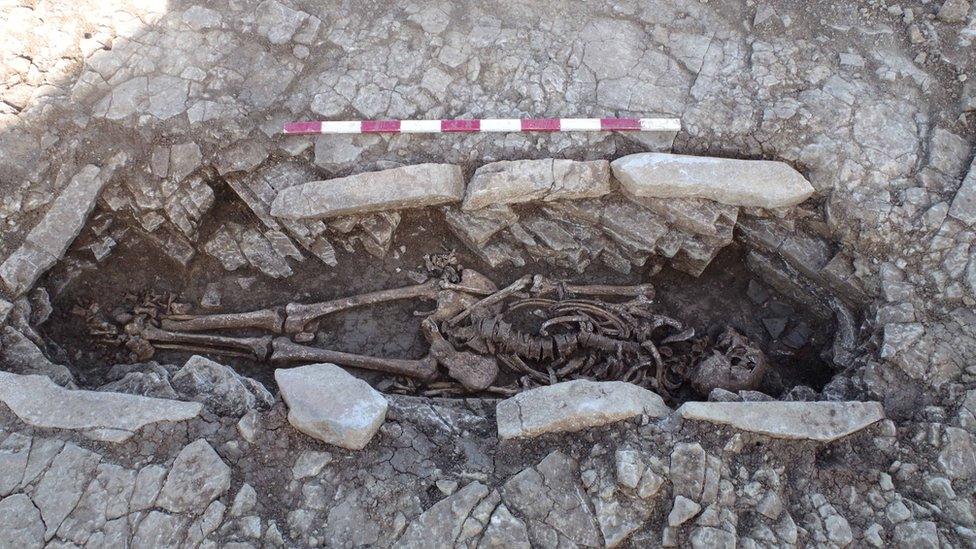
An adult woman skeleton was unearthed in the excavation
The skeletal remains of 50 adults and children from the Roman period have been unearthed in Somerset where a new school is being built.
The graves date from the Roman period 43-410 AD and also include items buried with them such as pottery and brooches.
South West Heritage Trust archaeologist Steve Membery said: "The individuals were evidently of some status in native society."
The new school in Somerton will replace King Ina Junior and Infants' schools.
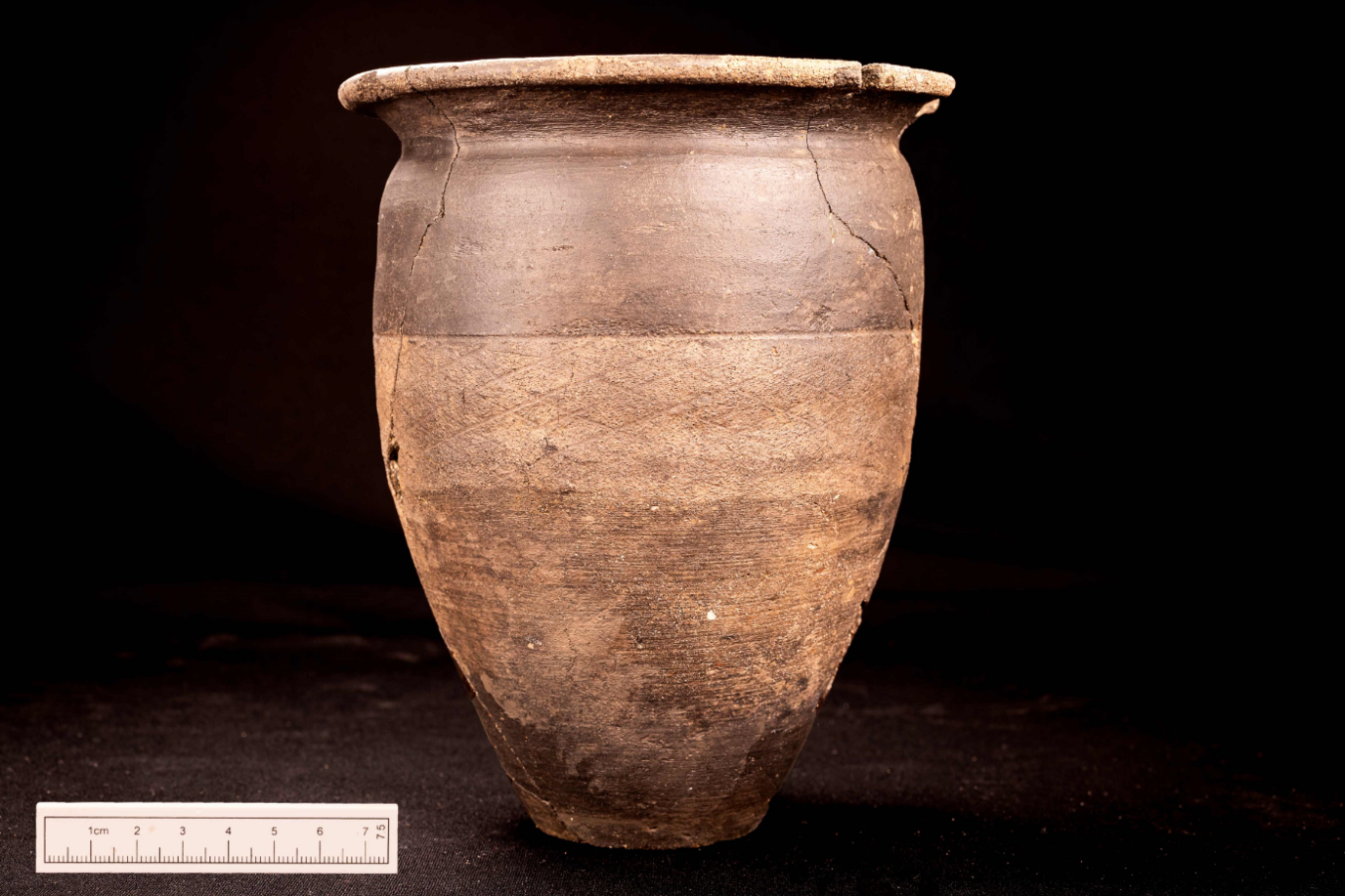
A burial pot was found in one of the graves
The trust has been working with Wessex Archaeology which has carried out the excavations.
Mr Membery added: "This site is a significant discovery - the most comprehensive modern excavation of a Roman cemetery in Somerset.
"The application of technology including aerial drones and techniques such as isotope and ancient DNA analysis offers major opportunities for insights into the lives of the Roman population of Somerton."
He added that the burials shed light on the transition between Iron Age and Roman society.
"The burials also show early adoption of Roman burial practices, such as offerings, alongside traditionally Iron Age characteristics."
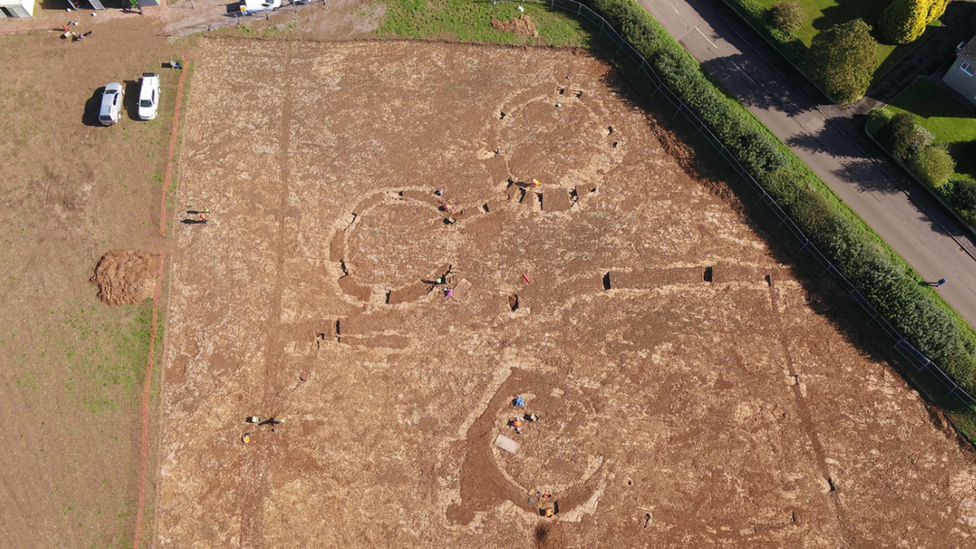
Traces of Iron Age roundhouses were also found by archaeologists
He said the graves were dug into the bedrock and lined with stone "curbs" to create a coffin structure.
These were then sealed with flat lias slabs, while others have an uncommon tented roof.
Traces of Iron Age roundhouses, and field systems, and of a Roman building, are also evident.
Now the field work has been completed, construction work for the new school is due to start later in the month.
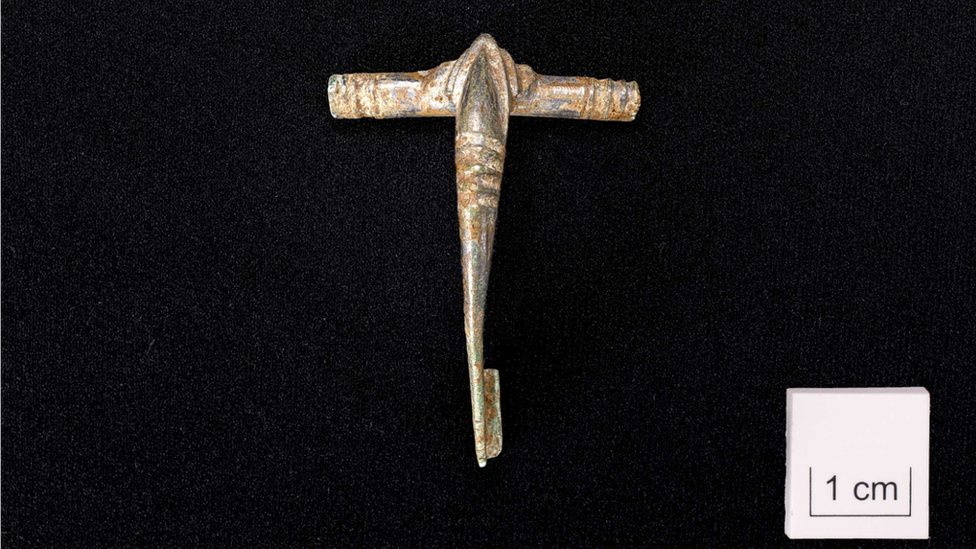
A brooch was one of the items found in an individual grave
- Published11 April 2019
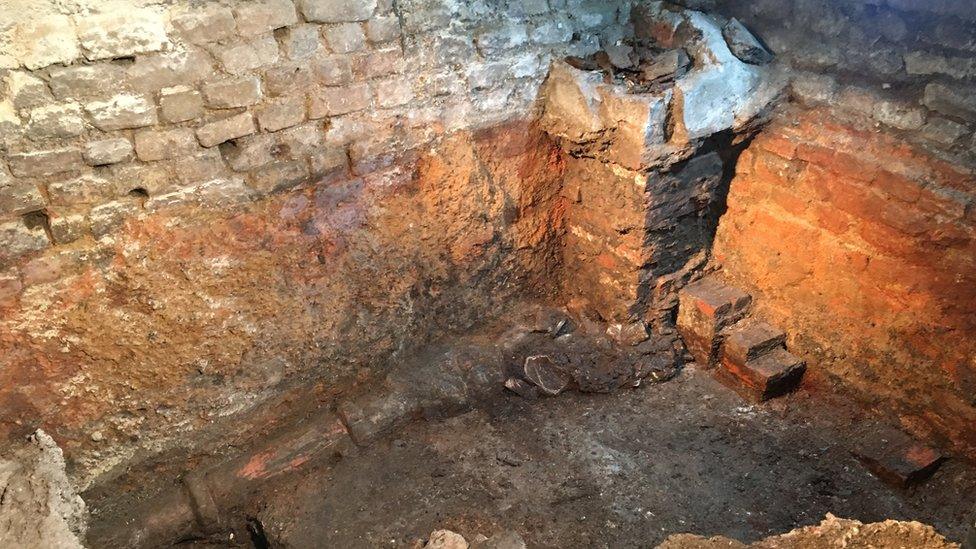
- Published27 September 2019
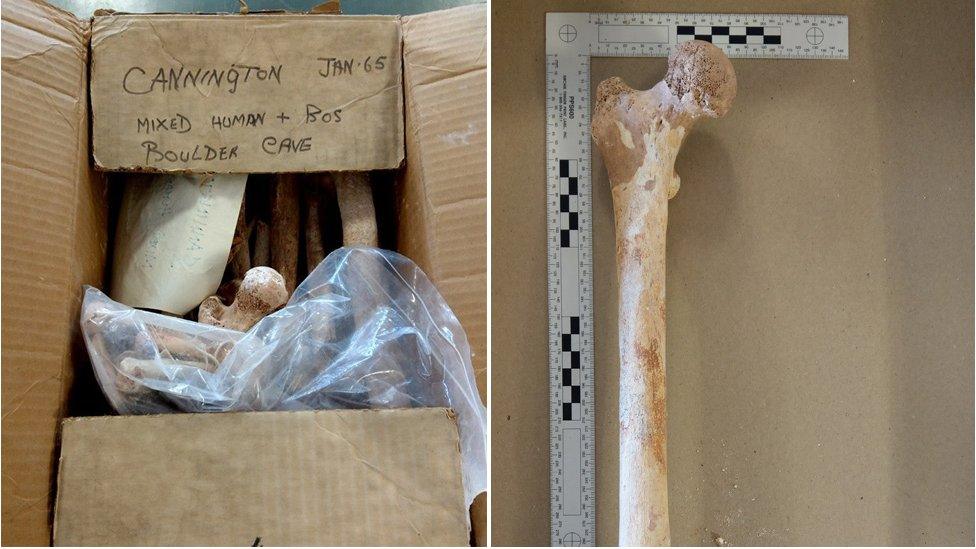
- Published28 August 2019
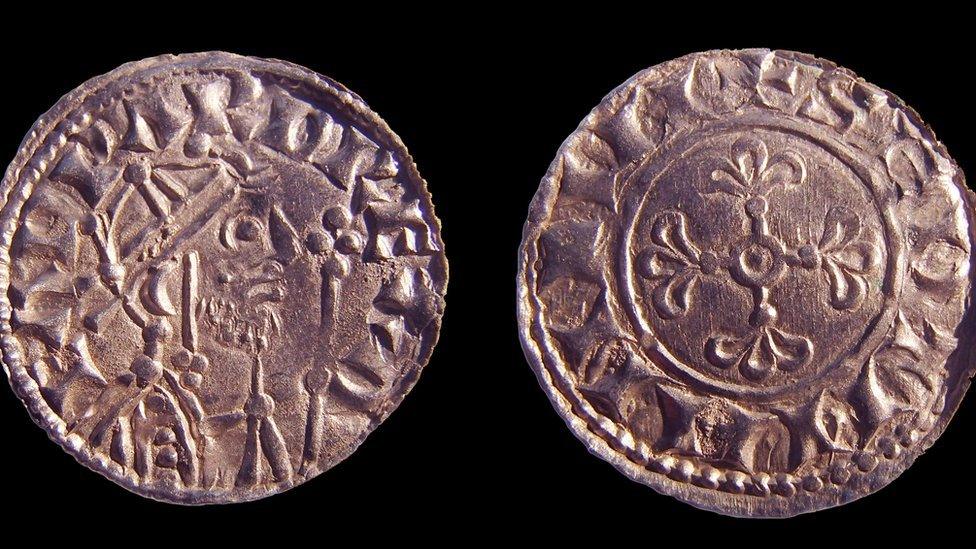
- Published1 August 2018
